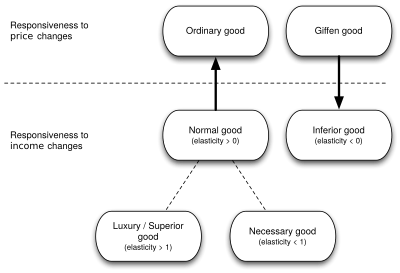Good (economics) facts for kids
A good in economics is any object or product (factors of production) that is useful. A commodity is one kind of good.
A good that cannot be used by consumers directly, such as an office building or capital equipment, can be called a good because it can be useful if it is sold. A 'good' in economic usage does not necessarily mean that the object is good in a moral sense.
If an object or service is sold for a positive price, then it is a good since the purchaser considers the utility of the object or service more valuable than the money. Some things are useful but not scarce such as air and are referred to as free goods and common goods.
In macroeconomics and accounting, a good is contrasted with a service. A good here is defined as a physical product that one can deliver to a buyer. The service is not an object, but an action that benefits someone. A more general term that preserves the distinction between goods and services is 'commodities'. In microeconomics 'good' is often used in this more inclusive sense of a commodity.
Images for kids
-
Tangible goods stacked in a warehouse
See also
 In Spanish: Bien económico para niños
In Spanish: Bien económico para niños



